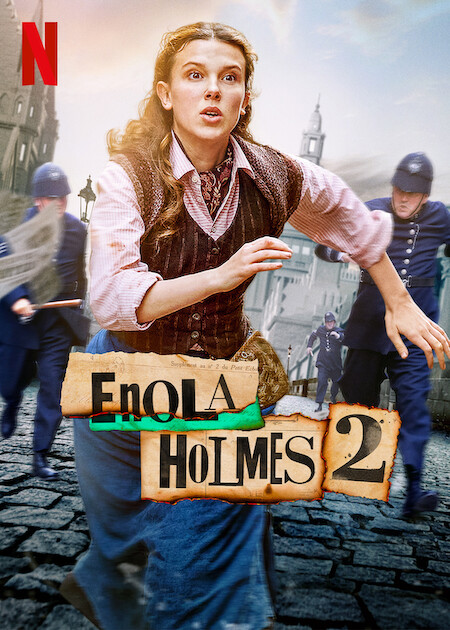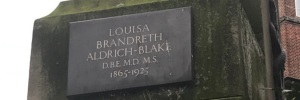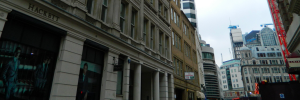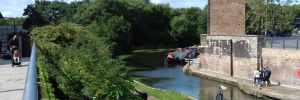Enola Holmes 2
Enola Holmes 2 is a film based on the novel series of the same name by Nancy Springer. If you’re not familiar with the novels, they follow the adventures of Sherlock Holmes’ younger sister, Enola. She’s a teenage girl who solves mysteries while traveling all over Europe. See Enola Holmes: Recreating Victorian London.
So if you’re looking for some inspiration for your London walkabout, keep reading! We’ll show you where in London you can visit to get a little taste of the action from Enola Holmes 2.
Sherlock Holmes, the world’s greatest detective, has a new competitor in his sister, Enola Holmes. Based on the beloved book series by Nancy Springer and introduced to fans everywhere as one of Netflix’s most thrilling mysteries yet: what happens when you meet your match?
Opening Scene
Opening scene of Enola Holmes 2 is Enola is running away from some policemen. If the bustle doesn’t indicate to you that this is in the Victorian period perhaps the biscuit terracotta entrance will give you a clue. She runs down a busy London street and after a collision with a horse drawn cab she runs down a side street. This look similar to Lewisham Street, a stone’s throw from Westminster Abbey which is also used in Mary Poppins Returns but production for many of the streets in this film are filmed in the industrial Victorian town of Hull.
Enola starts her own Detective Agency in an attempt to “join the pantheon of great Victorian detectives. Detective Fields, Mackenzie Macintosh, Sir Alfred Hornblower and the infamous Reginald Swain.” Nice nod to other literary detectives. While Enola is talking a golden seal for the Great Detectives Club, established in 1827 is shown (no such club existed).
Where is filming location of 221b Baker Street in Enola Holmes 2?
Sherlock is inundated with cases and walks out of a Georgian townhouse with 221 on the door so one would assume this is his home 221b Baker Street. The film location is Old Queen Street, the larger street which Lewisham Street feeds into. 28 Queen’s Gate Street has recently been refurbished (take a peek inside 28 Queen’s Gate here). When you look around the real street you will notice a number of blue plaques to a number of Statesmen including Statesman, Lawyer and Philosopher Lord Haldane (1856-1928). 28 Old Street where Lord Haldane hosted many dignitaries including Kaiser Wilhelm, who nicknamed the Queen Anne’s Gate property, “the dollhouse,” for its quintessential townhouse feel. It was for sale in 2017 for £21 million (US$25 million). Later on in the movie there is a shot taken from inside, through a window and out onto the street. This is the same location and angle as at the end of Bridgerton Season 1 with the bee at the window.
In this film the Pall Mall Gazette only shows the day and year, rather than the last film’s Day, date and year. The real Pall Mall Gazette obviously had day, date, month and year.
Eudoria Holmes blows up a post box
Eudoria (Enola’s mother) is wearing a sandwich sign advertising Stollery Baby Food for infants and invalids. “Nutritive & Tonic Food”. She posts a small package into a gorgeous red Penfold post box. The Penfold post box is hexagonal in shape and named after its designer. Although it combined the Victorian core belief of being beautiful but also practical it was too expensive to produce and was discontinued in 1879. This is also the second Penfold post box Helena Bonham Carter has blown up in the name of women’s rights. The first time was in the 2018 film Suffragette. The London location for this scene is outside 30 & 31 Great James Street in Holborn looking south. Even the bollards and checker pattern on the front door step are included in the shot. A metal bin, post box, a muddy road and a CGI’d church add layers to the visual story.
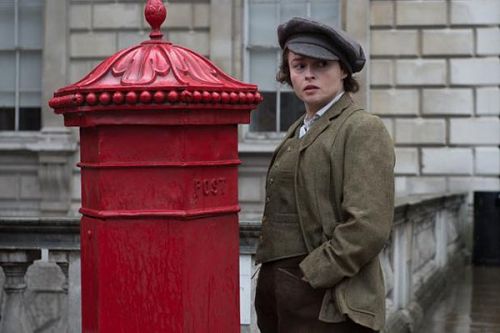
The House of Lords locations in Enola Holmes and Enola Holmes 2 include Chancery Lane and the Maughan Library. I don’t recognise the linenfold wooden panelling in the House of Lords does anyone else?
With her hair wrapped in rags Enola reads an invitation address to her to attend the Annual Ball at the Commerce Hall, Piccadilly (no such hall existed in London). They feature in a flashback to Enola and Tewkesbury talking through the gates, as seen in the first Netflix movie (outside the Maughan Library).
Alternative Housing
The story moves to Chatham Dockyards; also used in scenes in Bridgerton and Mr Selfridge. The raised wooden plank walkways over the dirty water is reminiscent of Jacob’s Island, made famous in Charles Dickens’s Oliver Twist.
Enola asks the girl who wants to find her sister what she was wearing. “It was her other dress, the green one”, the girl replied. Clothes were expensive, even more so if you had them made to fit. Those that couldn’t afford made to fit clothes bought second hand clothes. For the poor, you wore the clothes you had, which may be two or three jackets which helped keep out of the cold but also people didn’t have a lot of space to store them, especially if living in short term accommodation which may be accessible to others.
Matchgirls of the East End
In the process of finding a missing match girl, Enola goes undercover as an employee at the Lyon match factory, where the factory owners are covering up the fact that new cost-saving yet dangerous phosphorus compounds pose major risks to employee health.
The real-life matchgirls faced horrific conditions. The matchgirls’ strike of 1888 was an industrial action by the women and girls working at the Bryant & May match factory in Bow, London (the factory still stands). White phosphorus is a dangerous and deadly chemical. Bryant & May, the Victorian company that used it to cut costs in their factory even though they were likely aware of its health issues (and extremely painful death), did what they could so as not be charged with any wrongdoings. Lyon blamed typhus symptoms on workers’ teeth problems from typhus.
Bryant & May required workers who complained of toothaches (a common symptom of phosphorus poisoning) they were expected to have the tooth pulled or be fired. There was no NHS then so people worked in pain and would have resulted to home remedies. Removing the teeth didn’t stop the poisoning, just hid the symptoms for a little longer. The workers were poor and taken advantage of. Their pay was extremely low were frequently expected to work up to 14-hour shifts six days a week. Enola Holmes 2 pulls on the fact that fictional movies can play fast and loose with facts to paint a scary portrait of what could’ve transpired.
Strike Action
The matchgirls’ strike was a result of a number of events: reporter Annie Besant published an article exposing Bryant & May’s poor working conditions, the company fired three women for supposedly providing her with information. They also tried persuade employees to sign a document stating they were happy with their working conditions. As a response, 1,400 employees went on strike.
Enola takes Sherlock Home
Enola finds her brother Sherlock just as he is being kicked out of a pub over a disagreement over some wine. An odd choice of drink in a Victorian pub I must say. The pub in question is the Royal Oak pub in Marylebone.
Lord Tewkesbury’s London Home
When Enola calls on Tewkesbury at his London pad, the filming location is Berkeley Square. Berkley Square is another popular filming location. You may have seen it in Lone Scherfig’s wartime drama Their Finest, and also in the TV series Mr Selfridge.
Enola Stalks Lord Tewksbury
When Enola is munching on the “not so old” Dundee cake on a bench she is in St James’s Park. She comes across Lord Tewkesbury on his way to the House of Lords. St James’s Park has been used in a number of period dramas including Downton Abbey, Mrs Henderson Presents and 101 Dalmatians.
Non-London locations
The gorgeous Paragon Theatre in the film was also a set built at Shepperton Studios taking 12 weeks to build.
History of Music Halls
Music halls can be traced back to the taverns in coffee houses of 18th century London where performers sang songs while the audience ate, drank and joined him with them. I’m sure for those of you who’ve been on my road to ruin tour, Sadler’s Wells comes to mind.
Joseph Grimaldi was a superstar in Georgian London. He was so popular that he performed at Sadler’s Wells theatre and also Drury Lane in Covent garden in the same night and had to run between the two venues. And of course characteristically made a bit of a spectacle of this endeavour. By the 1830s taverns had rooms devoted to musical clubs where they present his Saturday evening sing songs and free and easies, which were informal entertainments for amateurs and professional performers.
And these happened all the way into the early hours of the morning. These evenings sing songs became so popular that entertainment was put on two or three times a week. They were Britain’s first mass entertainment emerged broadly speaking in the mid 19th century, and ended arguably after the first world war when the halls rebranded their entertainment as variety.
The Eagle, City Road
One of the most famous early music halls was The Eagle in London (the same eagle in Pop goes the weasel nursery rhyme). The Eagle was an East End tavern on the corner of city road and Shepardess walk that presented regular music entertainment and was doing a roaring trade by 1854. Marie Lloyd, who would become one of the biggest music hall stars first appeared that in 1885 at the age of fourteen.
Today, there’s an Eagle pub on the spot, and that displays old music hall prints inside. Other famous musical performers you may have heard of: Florrie Ford, Charles Chaplin Sr., the father to Charlie Chaplin, Arthur Lloyd, George Formby, and Nelly Power.
Variety shows in London still continue today, often with venues with a single doorway leading out into the street. Some are steeped in history and others are making history today. If you want to see a real life music hall in London then head to Wilton’s Music Hall.

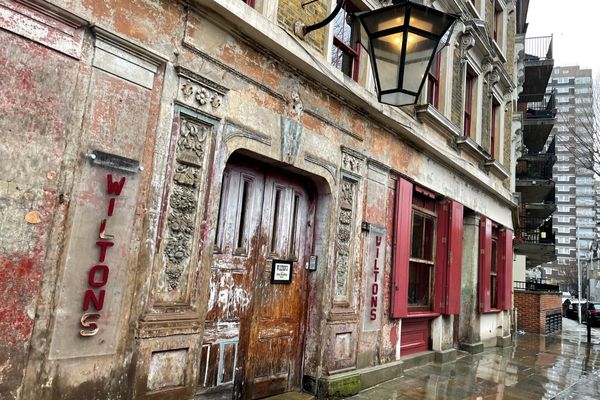
The ballroom scene was filmed at Halton House in Buckinghamshire. You may recognise the staircase in particular as it was used in Bridgerton. It was designed and by William Cubbitt & Co. in 1880 at the request of Alfred de Rothschild who wanted a more modern country house for entertaining, rather than the one he had inherited.
Many of the film’s interiors were shot at Shepperton Studios in Surrey, England, including the prison, Tewksbury’s, Bell Place, Whitechapel, some parts of the match factory, and Sherlock’s apartment at 221b Baker Street.
Other filming Location posts:
Enola Holmes 1: Filming Locations
